April 17, 2025 | 00:13 GMT +7
April 17, 2025 | 00:13 GMT +7
Hotline: 0913.378.918
April 17, 2025 | 00:13 GMT +7
Hotline: 0913.378.918
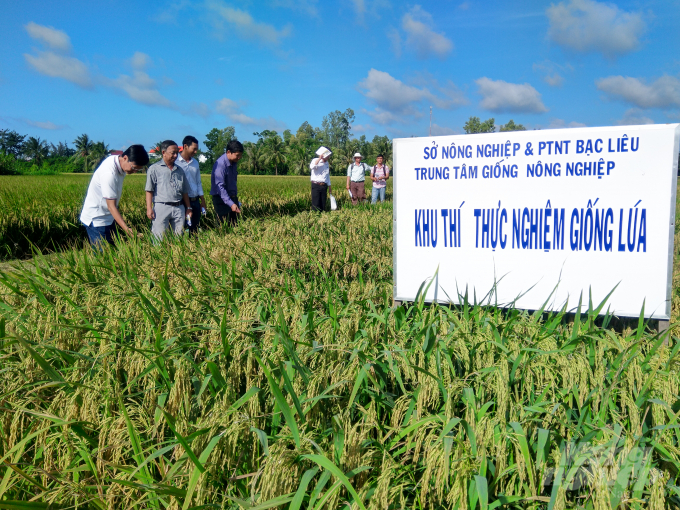
Two rice varieties BLR103 and BLR105 are adapted to three ecological regions of Bac Lieu province. Photo: Trong Linh.
Implementing the Scheme on agricultural industry restructuring in the direction of increased added value, climate change adaptation, and sustainable development, the Agriculture Seeds Center in Bac Lieu province researched, selected, and developed rice varieties with exceptional characteristics such as short-term varieties, high yield, high-quality rice, few pests and diseases, and resistance to adverse weather.
Following cross-breeding studies, the center identified two kinds, BLR103 and BLR105, that exhibit a relatively high salt tolerance and are adaptable to the shrimp-rice region in Bac Lieu province.
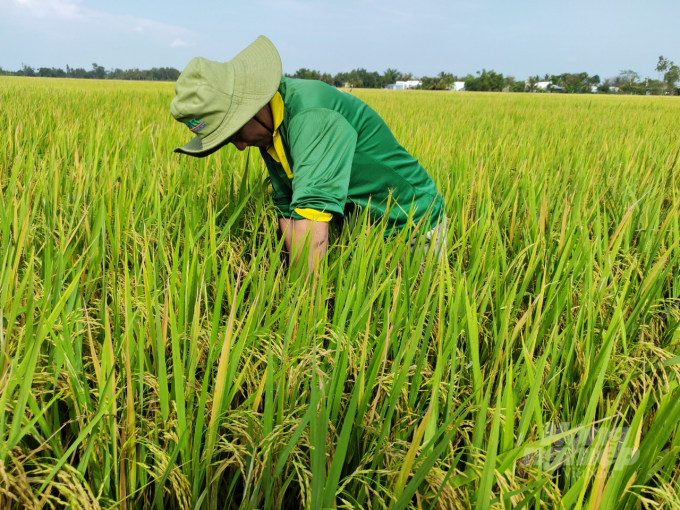
Two rice varieties BLR103 and BLR105 are less susceptible to diseases, yielding from 6 to 7.5 tons per ha. Photo: Trong Linh.
These cultivars, in particular, are less susceptible to brown planthopper, yellow dwarf disease, and blast disease. BLR103 has a 4% salt tolerance during the ripening stage, whereas BLR105 has a 5% salt tolerance, making it ideal for the province's shrimp-rice area. Simultaneously, these two rice cultivars are drought resistant and climate change adaptive.
Additionally, Bac Lieu province has chosen to develop two high-yielding cultivars, BLR203 and BLR312. Two rice cultivars, BLR413, and BLR404 are of high grade. Submit three types, BLR103, BLR105, and BLR413, for national testing.
Following the selection procedure, the center conducted a demonstration production of the BLR103 and BLR105 types in the province's shrimp-rice regions.
Mentioning the BLR413 rice variety, Dang Van Dau (An Khoa hamlet, Vinh My B commune, Hoa Binh district) shared that his family cultivated 1,000m2 of land and initially tested the BLR413 rice variety. They discovered that it requires more fertilizer than other rice varieties, but is less susceptible to diseases, flowers at the same time, and yields on par with some other fragrant rice.
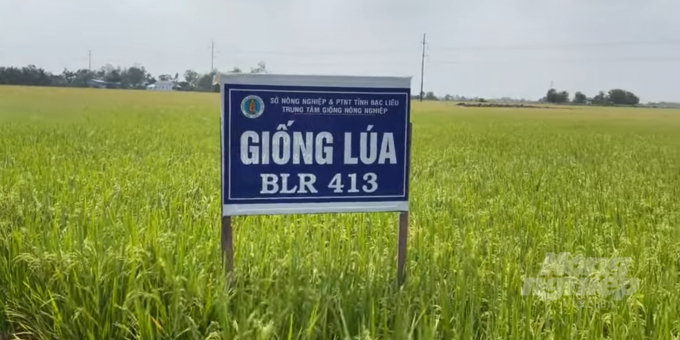
Compared with local rice varieties, BLR413 has good budding, fewer pests and diseases, uniform flowering, and the yield is from 6-7 tons per ha.
According to Nguyen Phuong Hung, Director of Bac Lieu Provincial Agricultural Seed Center, functional departments evaluated two rice varieties BLR103 and BLR105 with a short production time (95 days) that have good salt tolerance, a low phenotype, a beautiful shape, and a hardy plant through demonstration production at the sites. Rice is less vulnerable to pests and illnesses, produces high-quality rice, and is thus ideal for the province's shrimp-rice-producing regions.
Specifically, the BLR413 variety is ideal for the region that produces three rice harvests, as it has a 95-day production cycle, is resistant to pests and diseases, produces hard plants, and has the potential for a high yield. Rice, in particular, is aromatic, delectable, and adaptable to both local and international markets.
The Department of Agriculture and Rural Development is requested to provide favorable circumstances for the Center to commercialize the BLR413 rice variety under Bac Lieu rice's brand name. Additionally, local governments are urged to encourage farmers to grow salt-tolerant rice types in the rice-shrimp region, which is often afflicted by drought and saltwater intrusion.
Engineer Duong Van Ngo, Head of the Technical Department at the Bac Lieu Agricultural Seed Center, stated that the Center has deployed to test three rice varieties, BLR103, BLR105, and BLR413, in three distinct ecological regions throughout the province to further assess adaptability and serve as the basis for national breed recognition. Particularly noteworthy are the biological features of two rice types, BLR103 and BLR105, which have a development time of 95-100 days.
To begin, this is an early success in terms of time, as compared to the parent breed's 135-day lifespan. The second is a tough tree that does not fall, a low tree that overcomes the parent tree's limitations (too long and tall, easy to fall). The third advantage is the very high yield, which ranges between 6 and 7.5 tons/ha in the ecological area. Depending on the soil characteristics in the rice shrimp location, it may be beneficial or detrimental.
Translated by Linh Linh
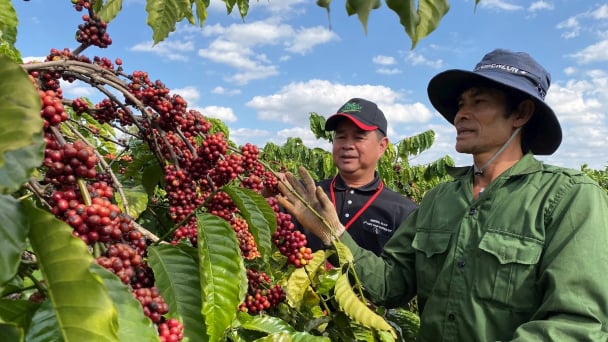
(VAN) Businesses emphasize fairness and equality when integrating social factors into their sustainable development strategies.
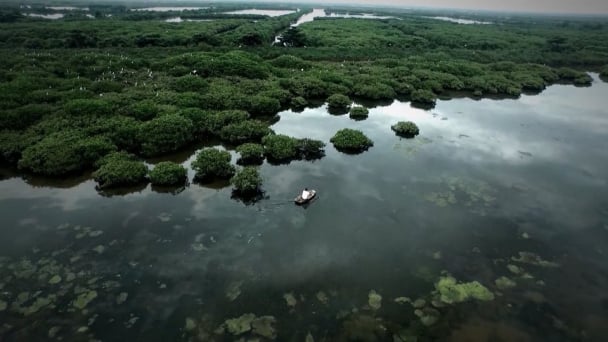
(VAN) French organizations and enterprises propose that Thai Binh province provide potential and long-term cooperation contents related to climate change response and green industrial development.
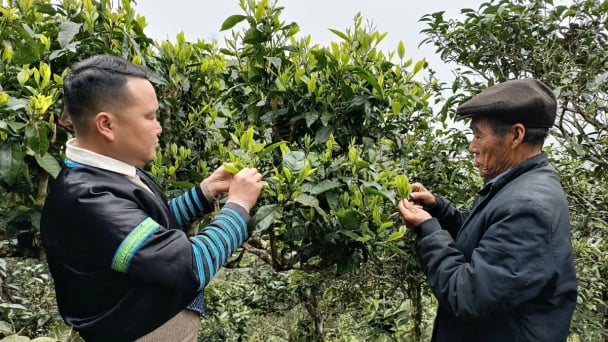
(VAN) Shan Tuyet tea is considered a 'heavenly treasure'. The H'mong people allow the tea to grow naturally, adhering to organic production principles, with the aim of exporting the product.
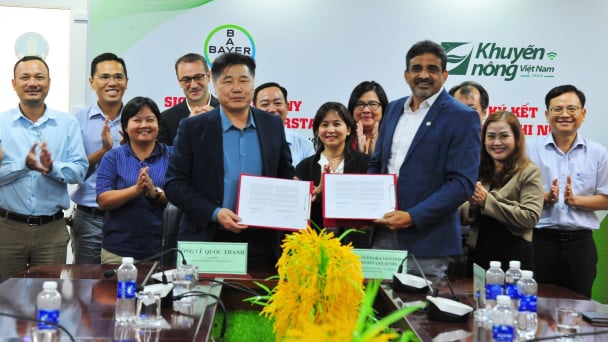
(VAN) Bayer Vietnam and the National Agricultural Extension Center have signed a partnership agreement to expand the development of effective and safe farming models for rice, durian, and coffee.
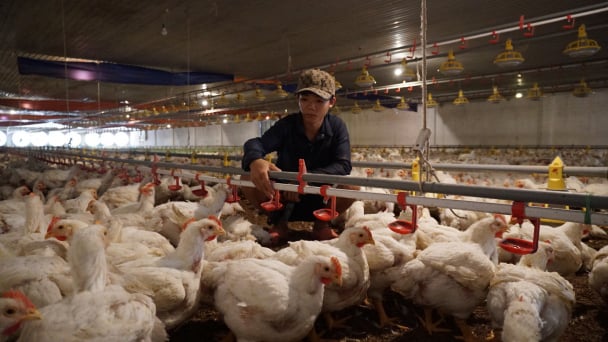
(VAN) Tay Ninh province possesses all the favorable conditions, from natural advantages to geographic location and social harmony, to drive economic development, particularly in attracting investment and advancing modern livestock farming.
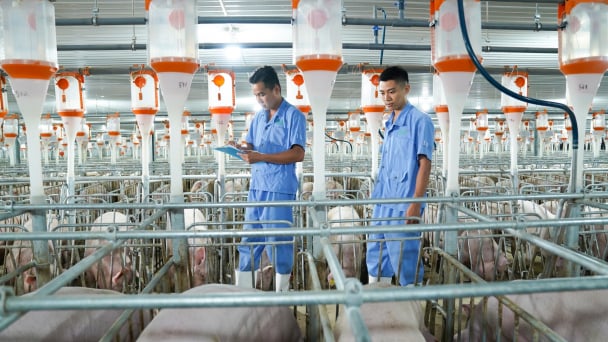
(VAN) Notably, every link in BAF's entire closed livestock value chain Feed - Farm - Food has received international certification.
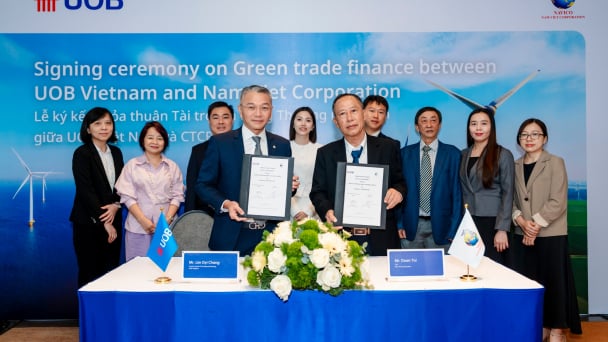
(VAN) UOB Vietnam has recently signed a green credit agreement with NAVICO to develop sustainable aquaculture that meets international standards.